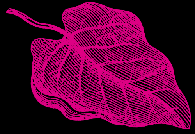|
Lausanne Jardins 2004, “Jardins de passage”
The concept for the third edition was in direct relationship with Lausanne’s history of urban development. From the end of the 19th century to the middle of the 20th century, four railway areas were established in a downtown valley, where the Flon River used to flow. The industrial activities of the Flon area having become obsolete, the site offered a major opportunity for housing development, one that could increase by about 20 per cent the urban capacity of Lausanne.
Lausanne Jardins proposed to rediscover this former industrial area by putting up 30 gardens along a pathway that lead from city centre to the western end of the valley. A temporary railway line was also reinstalled on an ancient freight track, as a prototype for public transportation hypotheses. For the first time, “Lausanne Jardins” achieved the aim of offering an urbanistic prospective tool for future development of the city.
The following authors deserved special attention: Pierre Bonnet & Robert Ireland (Palmatifide) ; Christoph Hüsler & Pascal Amphoux (Bancs Publics) ; HybrIdées (Appartenances) ; Jacqueline Schwartz & Yves Staub (Impressions végétales) ; Erika Gedeon & Stefan Schmidhofer (Restons sur le tapis) ; Jean-Yves Le Baron (Fleur de pavé) ; Valérie Lintz & Nicole Graber (Dans de beaux draps) ; Nadia Lauro & Laurence Crémel (Coureuses) ; Charles Duboux & Ulrich Doepper (Chemins de traverse) ; Helena Buono, Anthony Chrétien, Thomas Eschapasse, Roberto Venturi (Convergence) ; Butikofer & De Oliveira, Pierre Mariétan (Kiosque à musique) ; Agence Paule Green (Belles échappées) ; Triporteur architectes, M.H. Giraud & Itinera (Il était une voie dans l’Ouest) ; Frank Naud, Philippe Bonhôte & Setzuko Nagazawa (Immersion végétale) ; Yves Lachavanne (Ecrous, baignoires et calebasses).
Archives :
|

